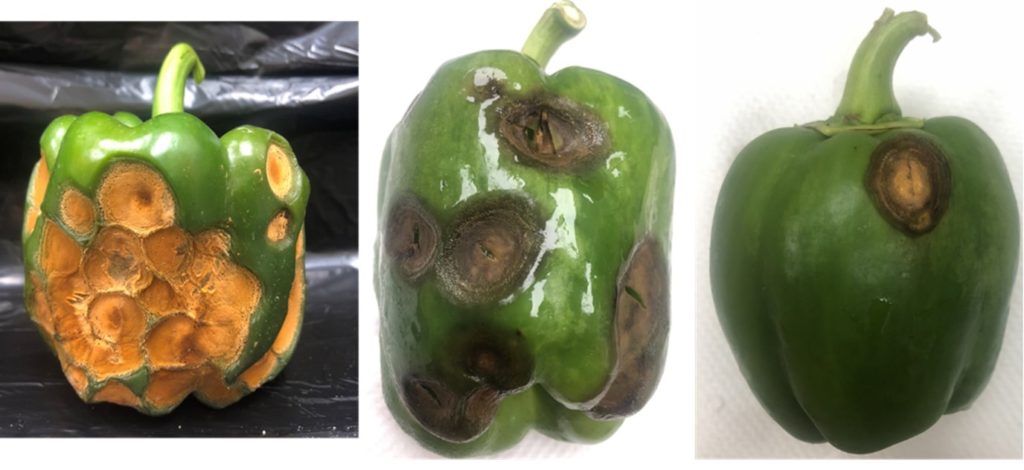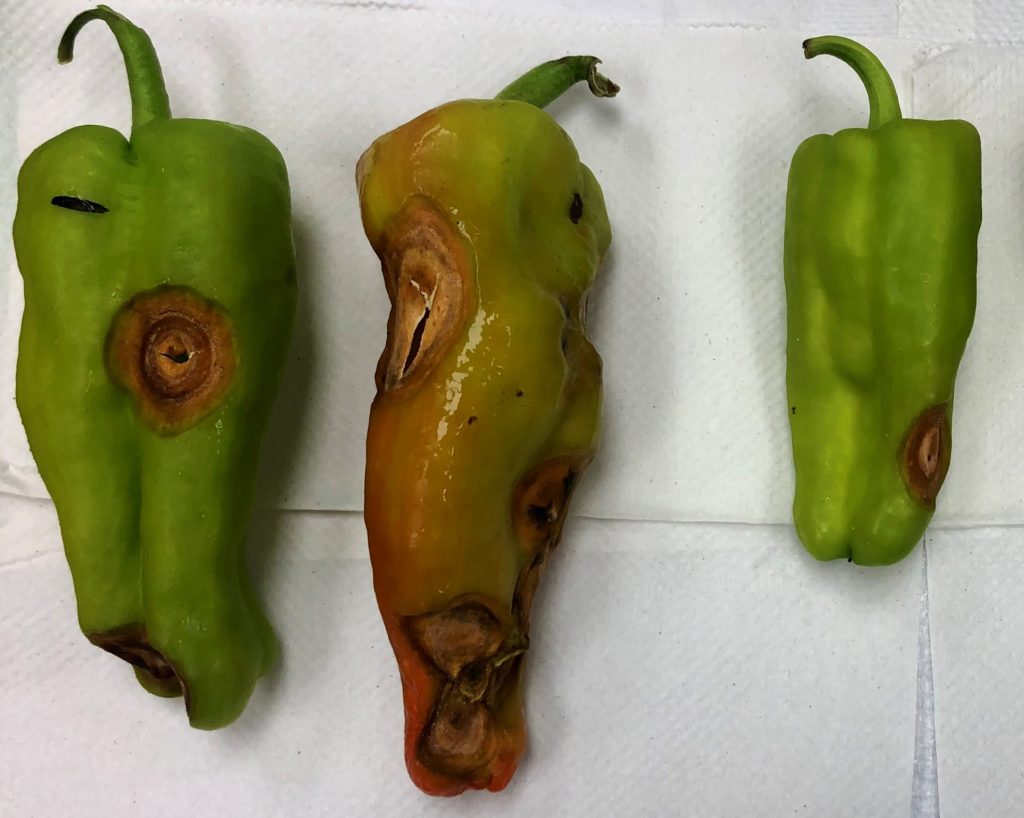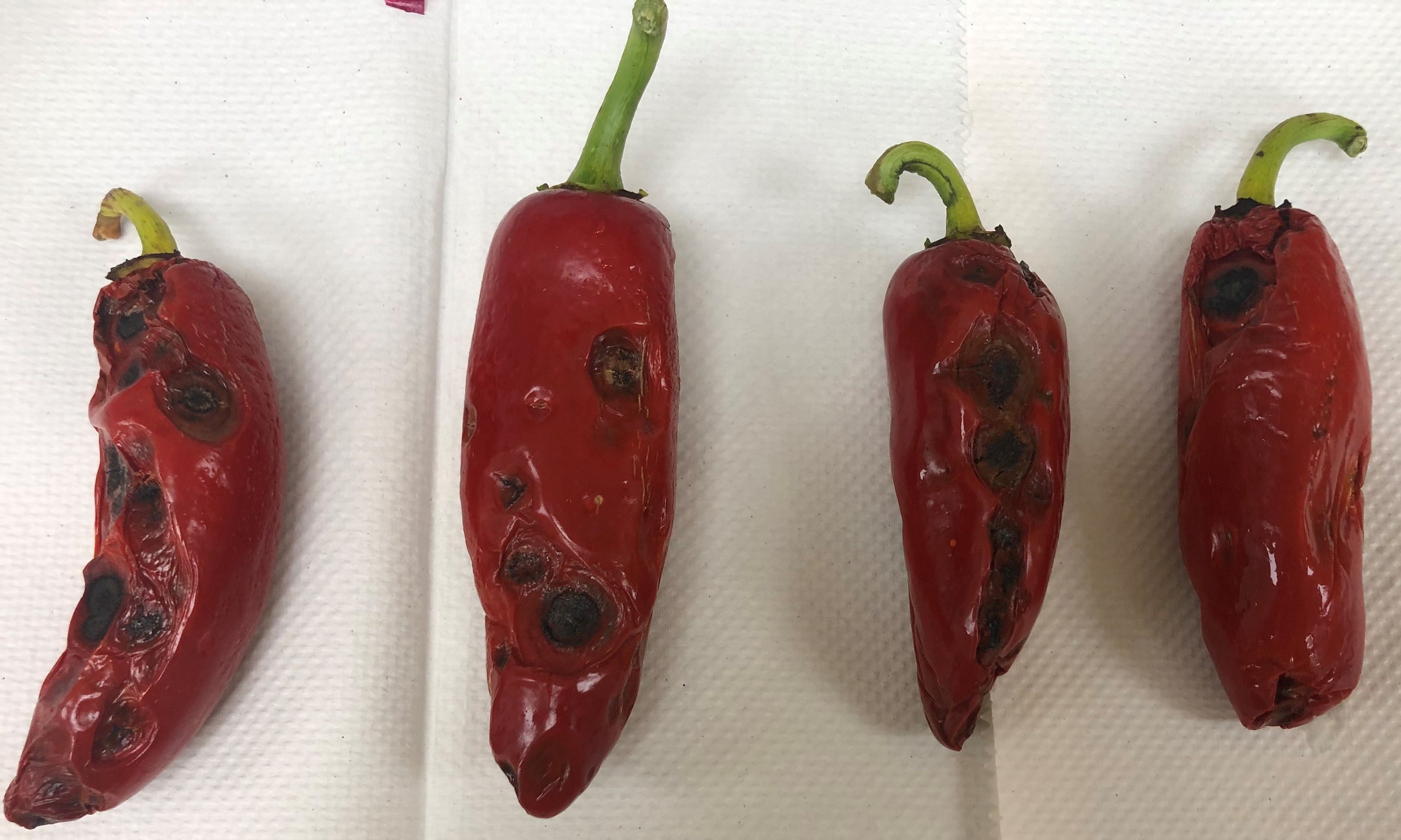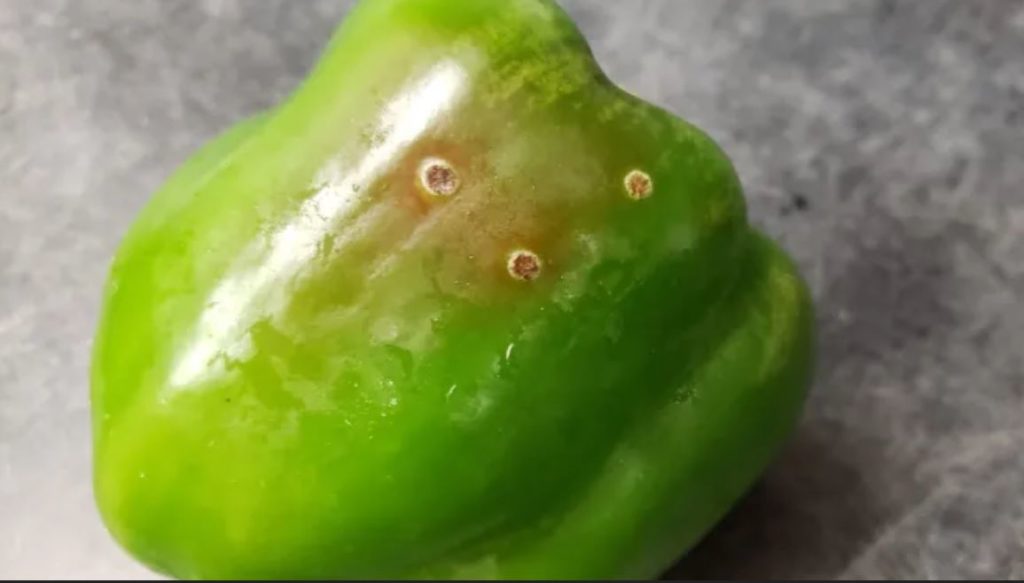By Bhabesh Dutta
Anthracnose in pepper is caused by a fungal group of pathogens belonging to mainly Colletotrichum gloeosporioides and C. acutatum.

TWO TYPES OF ANTHRACNOSE
Anthracnose in pepper is a common issue that pepper growers face, particularly after sun scalding of fruits. This type of anthracnose is called “secondary anthracnose” as the fungal pathogen needs some kind of injury to the fruit for infection. Sun scalding of fruit can create opportunity for the anthracnose pathogen.
In some cases, anthracnose infection can be primary. This occurs when the pathogen does not depend on injury or sun scalding to the plant or fruit for infection. The aggressive fungal pathogen can initiate fruit infection under favorable environmental conditions. In some cases, symptoms can be seen on foliage, too.
If not managed, yield losses can be severe, especially with post-harvest fruit rot. The pathogen can also spread in storage bins and can secondarily infect other healthy-appearing pepper fruits.

ANTHRACNOSE MANAGEMENT
Management of this disease requires an integrated approach. Management of plant debris after harvest is critical as the pathogen can survive on debris saprophytically. Growers are highly recommended to turn their soil to facilitate decomposition of debris.
Infection (primary anthracnose) is favored by prolonged leaf wetness, as with any foliar pathogens. Hence, irrigation management (type and timing) as well as optimum plant populations and spacing are critical for reducing excess moisture. Overhead irrigation predisposes the crop to anthracnose infection, so drip irrigation is highly recommended.
The pathogen can be seedborne, too. Infested seeds can introduce inoculum and initiate an epidemic in the field. Therefore, purchasing seed from reputable sources is recommended. Growers are advised to inspect their transplants before purchasing.
With respect to fungicides, Fungicide Resistance Action Committee group 11 (Quadris and Cabrio) fungicides generally do well against anthracnose pathogens. Based on a recent survey, most of the isolates are moderately sensitive to azoxystrobin, which is an active ingredient in Quadris. This information is critical as most of the pepper growers in Georgia rely on Quadris for disease management.
Based on multiyear fungicide field trials, University of Georgia (UGA) corroborated these findings as Quadris was effective in reducing disease severity to an economically acceptable limit. Also, apart from other labeled fungicides, Aprovia Top showed good efficacy in reducing disease severity. Growers should follow a fungicide program comprised of Quadris/Quadris Top, Bravo and Aprovia Top.

SCREENING FOR BACTERIAL SPOT
Bacterial spot in pepper is caused by a complex of Xanthomonas species in Georgia, predominantly Xanthomonas euvesicatoria. The pathogen is primarily seedborne, and the seedborne inoculum can initiate an epidemic in transplant houses and production fields under ideal conditions.
Use of pathogen-free seed is recommended to manage this disease, which seems easy but is quite challenging to achieve in practice. Testing of pepper seeds is generally done to exclude bacterial-spot-causing Xanthomonas from infested seedlots. However, due to the challenges in seed sampling and distribution of bacteria in infested seeds, it is harder to exclude bacteria if present in lower populations, particularly below detection and transmission thresholds. At best, seed-health testing can remove/exclude heavily infested seedlots. Seed treatments with labeled antimicrobials (peroxyacetic acid) can reduce bacterial populations but cannot exclude them completely from seeds.
In transplant houses, seedlings are generally screened carefully for any bacterial spot symptoms. If found, infected seedlings along with asymptomatic seedlings around the area are rouged. This practice does not guarantee the absence of bacterial inoculum in asymptomatic seedlings nearby. At best, it helps in reducing inoculum from further propagating and spreading under ideal transplant house conditions.
Growers should visually screen their seedlings for bacterial spot symptoms before transplanting in the field. If found, it is recommended to rogue these seedlings and those around it. In some cases, it is safer to exclude the seedling trays where these symptomatic seedlings were found. However, this will add to the overall input costs.

Photo by Pamela Roberts
FIELD INFECTION PREVENTION
In the field, it is recommended to remove volunteers and solanaceous weeds before planting because they may harbor pathogen/pathogens that cause bacterial spot.
Once pepper seedlings are transplanted, use drip irrigation rather than overhead irrigation to reduce the risk of pathogen spread.
Overuse of nitrogen fertilizers beyond the recommended optimal rate can increase the risk of foliar infection with the bacterial spot pathogen.
Use of plant defense inducers like Actigard and Leap can help induce systemic acquired resistance (SAR) in pepper seedlings. In trials conducted at UGA, a program of Actigard and Leap was effective in reducing bacterial spot severity without any issues of fitness cost or decreased yield and quality. In these trials, Actigard was used as the initial spray. Later in the season, Leap was used particularly during flowering.
Pepper growers in Georgia rely on plant defense inducers as copper tolerance is quite prevalent among bacterial-spot-causing xanthomonads. In some cases, use of copper does not help in reducing disease severity. In order to reduce the risk of developing copper tolerance, growers tend to tank-mix copper and copper products with mancozeb.
With respect to varieties, it is recommended to use non-X10R varieties of bell peppers in spring and X-10R in summer and fall. Overall, an integrated disease management program utilizing all management practices is recommended to reduce losses in yield and quality.
Bhabesh Dutta is an associate professor and Extension vegetable disease specialist at the University of Georgia in Tifton.









